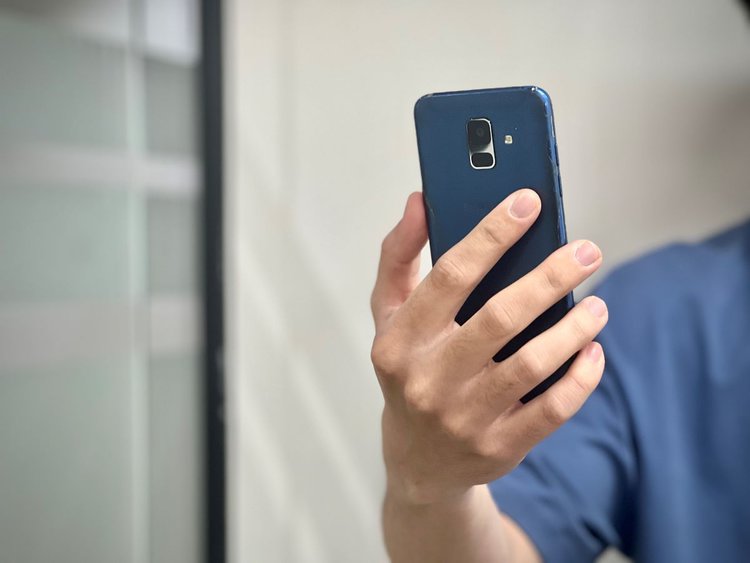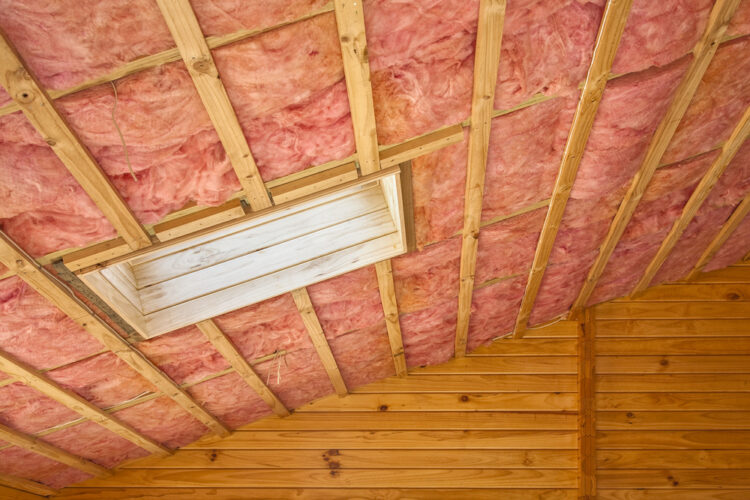How to Block Cell Signals Legally in Your House

What To Know
- Cell signals are often blocked for safety, preventing espionage, and disrupting terrorist activities.
- Materials like signal jammers, Faraday cages, and specific construction materials can weaken or block cell signals.
- While signal jammers are illegal for activities such as obstructing police, using other signal-blocking materials for personal reasons is legal.
In a world where privacy, safety, and health concerns are paramount, the quest to legally block cell signals in a room, the entire household, or even the bathroom becomes highly demanded.
This article provides insight into the motives behind signal blocking, its legal facets, and methods to implement it effectively.
Delve in to discover solutions tailored to your unique requirements.
Quick Navigation
Why Block Cell Signals?
Cell signals are usually blocked due to safety concerns.
Some high-level, governmental, or law enforcement organizations block cell signals amid concerns about spies using them to send confidential information to their associates.
For instance, a military base that deals with secret missions may block cell signals to prevent any spies from finding out about an attack before it takes place.
Cell signals may also be blocked to stop criminals or terrorists from communicating via the cellular network.
As technology develops and becomes more widespread, organized crime groups have taken advantage of it to communicate internationally and transmit information about nefarious activities.
Finally, many terrorist organizations use phones to remotely detonate bombs.
This allows them to commit atrocious and violent acts completely remotely since no one needs to physically detonate the bomb, preventing them from becoming one of the disaster’s many casualties.
In this case, the phone becomes a makeshift receiver and is physically connected to the bomb. Then, all the terrorist needs to do to set it off is send the phone a signal (e.g. by calling it).
So, if you ever enter a high-security building (e.g. a military compound, embassy, etc.) and are asked to leave your phone at the door or find that your cell signal has been disabled, now you’ll know why!
What Can Block (or Weaken) Cell Signal?
Now that you know a few reasons why institutions may block cell signals, let’s learn which materials can successfully block or weaken them. While some of these cell signal-blocking methods are more efficient than others, they all can at least weaken surrounding cell signals.
Signal Jammer
Signal jammers are by far one of the most efficient ways to block various types of signals, including cellular and Wi-Fi signals. These compact devices are small enough to fit in your back pocket or purse and can block signals in a 30-foot to one-mile range, depending on their power outputs.
They’re also portable, so law enforcement can block signals whenever and wherever they see fit.
Because signal jammers are so effective, they’re illegal for civilians to use. Law enforcement and government agencies worry they could be used to prevent emergency communications, like calls to 911.
For instance, you could be trying to block a specific person’s cell signal and inadvertently prevent your next-door neighbor from calling an ambulance.
So, only law enforcement agencies are allowed to use them for specific situations.
To learn more about signal jammers and how they work, watch the video below.
Please note that although the linked video is a review, it is only for educational purposes. You should not purchase one yourself. Should law enforcement prove you used a signal jammer, you could face up to a $11,000 fine and a prison sentence.
Faraday Cage/Fabric
If you’re in the market for a legal cell signal blocker, consider using a Faraday cage, also sometimes referred to as a Faraday shield. This nifty signal-blocking material is conductive and blocks all electromagnetic fields, like cell signals.
Faraday cages can come in the form of fabrics, small boxes, and so on. However, all of them must be made out of a conductive material, like metal, that blocks signals.
For instance, Faraday fabric is often used in RFID-blocking wallets and passport cases, which comes in handy if you frequently take crowded public transport or travel.
These wallets can be quite expensive, so consider purchasing a foot of Faraday fabric and making your own RFID-blocking wallet/passport case for a fraction of the price.
Watch the video below demonstrating how Faraday cages work and how to make an RFID-blocking wallet at home.
Many companies also make Faraday bags, which work the same as Faraday wallets but are large enough to store your electronics.
If you’re still confused about how Faraday cages work, think of them as a portable version of an elevator. Like Faraday cases, elevators are also mostly made of metal and block any device’s cell signals, which is why your texts rarely go through when you’re in one.
Low-E Glass

Low-emissivity glass is frequently installed in homes and offices as it helps keep buildings cool during the summer by blocking outside heat and warm in the winter by keeping the internal heat from escaping.
It does this by reducing the amount of infrared and ultraviolet light passing through it. The best part is that the low-E glass coating is completely clear.
While low-E glass is usually installed in buildings to make them more energy efficient, it can also block or weaken cell signals.
So, if you have a room in your home that you want to protect from cyber-attacks, consider replacing its standard windows with low-E glass ones.
Fiberglass Insulation

Fiberglass is a common construction material used to insulate buildings and regulate their temperatures. It’s most recognizable by its fluffy, pink appearance.
Besides insulation, fiberglass is also used to make buildings more fire retardant, dry, and soundproof. It often comes in large sheets and is installed in between a building’s outer and inner walls, and in its attic.
Due to its insulating nature, fiberglass can also block cell signals, however, most people who live in homes with this type of insulation should not see a noticeable difference in their network or cellular signal strength.
It should be noted that fiberglass is dangerous to inhale as the microscopic fiberglass strands can become lodged in one’s lungs.
So, please make sure to take the proper precautions whenever handling it, such as wearing a mask and gloves, especially if you already have a respiratory disease.
Brick and Concrete
If you live in a building made of thick brick or concrete walls, you may notice that your Wi-Fi signal frequently drops or weakens. These materials are Wi-Fi blocking, and consequently, can also block cell signals.
These common building materials are extremely dense, making them the perfect materials to build a signal-blocking home/room out of. It’s also why you might experience signal interference if you live in the middle of a concrete apartment building.
Wood
If brick and concrete buildings aren’t your aesthetic, you can still create cell signal-blocking buildings using wood. While all wood types will weaken cell signal to some extent, ash, beech, mahogany, maple, and oak are the most effective cell-blocking wood types. So, don’t be surprised if you’re struggling to make a call while staying in a cozy wooden cabin.
Naturally, trees also block cell signals, especially if you’re in a densely packed forest.
Plasterboard

Plasterboard (sometimes referred to as drywall) is a lightweight building material often used to line the inside of buildings, especially in North America.
Although it is composed of concrete and sand, it’s usually so thin that it poses no threat to cell signals, making it the perfect choice for anyone wanting to maximize their Wi-Fi or cell signal strength.
Wi-Fi Blocking Materials
While Wi-Fi and cell signals serve different purposes, they are both RF waves. This means that anything that blocks Wi-Fi signals, is bound to also block cell signals, making all of the cell-blocking materials listed above a threat to Wi-Fi speed and stability as well.
With that in mind, you can learn more about Wi-Fi blocking materials by reading our article What Materials Can Block Wi-Fi Signals? where we also give you tips on how to boost your home’s Wi-Fi strength.
Practical Applications in the House, Room, Bathroom, or a Building
While blocking cell signals with a signal jammer or with the intent to break the law (e.g. prevent police activity) is illegal, it is legal to block cell signals for any personal security or health reasons.
For instance, there is a growing group of people concerned that RF waves can be harmful to their health, brain function, and development. You can learn about RF waves’ effect on our health by reading our article Should I Unplug/Turn off My Wi-Fi at Night or When Not in Use? which references peer-reviewed studies on the matter.
There’s a common trope of people wearing aluminum hats to prevent RF waves from penetrating their brains, and at times, from preventing the government from “reading their thoughts.”
TV shows have frequently played with this trope. For instance, in Better Call Saul, the cooky character “Chuck” is often seen wrapped in a metallic space blanket to protect his electromagnetic-hypersensitive constitution.
Just as you are welcome to wrap yourself in conductive signal-blocking materials, you are more than welcome to build your home out of signal-blocking construction materials or wrap your phone in Faraday fabric.
The only case where this would become illegal is if you’re using signal-blocking materials that prevent others around you from accessing a cellular signal, whether intentionally or not.
If you’re serious about blocking all cell signals in your environment, consider isolating devices in your home that radiate cell signals, like your cell phone or router. For instance, you can place your mobile devices in a Faraday bag and turn your router off whenever you’re not using them.
Wrapping Things Up
Government, military, and law enforcement agencies usually block cell signals as a way to prevent espionage, criminal, and terrorist-related activities. Not only can phones be used to communicate sensitive information, but they can also be used to remotely detonate bombs.
Signal jammers are an extremely effective way to block cell signals, but they are illegal for civilian use.
So, if you’re trying to reduce cell signals in your home, consider using a Faraday cage, low-E glass, fiberglass insulation, brick, concrete, or wood. Plasterboard, on the other hand, is not proven to weaken cell signals.
Besides signal jammers, all of these signal-blocking materials are completely legal to use and you’re free to install them in your home or wrap them around your electronics. However, we advise being wary of using fiberglass insulation as it can damage your respiratory system if inhaled.
Are you interested in blocking cell signals in your home, and if so, why? In your experience, what’s the most effective signal-blocking method?
Let us know in the comments below!
Yesenia Achlim is a technical copywriter and editor with a focus on AV equipment. She aims to break down complicated topics and make technology accessible, no matter your technical expertise. When she’s not teaching you how to replace a projector lamp, you can find her reading and baking.


I need to stop cell service in my home at night what are my options